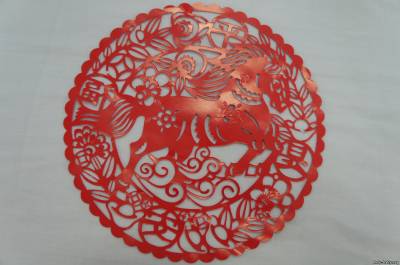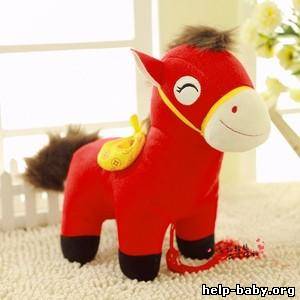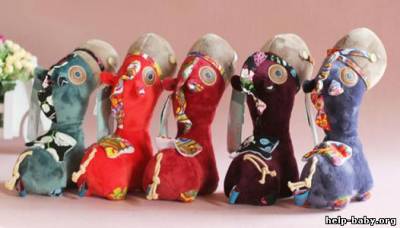The Spring Festival, or Chinese New Year, is the most important traditional festival in China and is celebrated for fifteen days. There are many customs relating to food, decorations, greetings, and gifts. Here is a daily itinerary for the festival in 2014.

Pre-Chinese New Year Preparations
Worshipping the Kitchen God (23rd of Layue)
Chinese New Year for some people begins on Kitchen God's Day.
In ancient China, governments offered sacrifices to the kitchen god
and prayed for blessings on the 23rd of Layue (腊月the twelfth month of
the lunar year), and common families and boat dwellers did so on 24th
of Layue and 25th of Layue respectively.
\Worshipping the kitchen god has great influence all over China. In
ancient times nearly every family had a kitchen god shrine in their
kitchen. It is said that the kitchen god was authorized by the Jade
Emperor to be in charge of the stove, and thus he is worshipped by
Chinese as the patron god of the family.
In the legend, the kitchen god stays at a family from New Year's Eve,
protecting and supervising the family till the 23rd of Layue, when he
goes to heaven to report to the Jade Emperor the family's
transgressions and good deeds. Therefore families make offerings to him
in order to "bribe” him into reporting good things about the family on
this day. On New Year's Eve, people welcome him home again.
Usually, the shrine at which the kitchen god is sacrificed to is in
the middle of the northern or eastern side of the kitchen. Family
households without such a shrine may attach a painted image of the
kitchen god to the wall. Some paintings contain the kitchen god and a
woman called Grandma Zaowang (the kitchen goddess 灶王奶奶).
Sweeping the Dust(24th of Layue)
There is a folk proverb saying "to clean the house on the 24th of the
month". After worshipping the kitchen god, people become busy with
preparing for the Spring Festival. The period from the 24th of Layue to New Year's Eve is called ‘Days for Welcoming the Spring Festival' or ‘Days for Sweeping the Dust'.
Sweeping the dust means a thorough cleaning of the house before
Chinese New Year, which is a tradition for Chinese people. During those
days, all family members take part in the house cleaning activities to
create a clean environment to welcome in the New Year, such as cleaning
rooms and the yard, washing all dishes or other kitchen ware, and
washing bedding.
Actually sweeping the dust represents a wish to put away old things
and bid farewell to the old year because in Chinese "dust” sounds the
same as "陈” (chen, meaning ‘old and past')
Making Tofu and Welcoming the Jade Emperor (25th of Layue)
Making Tofu
Another folk proverb says "make tofu on the 25th”. Nowadays there are some places where people eat doufuzha (豆腐渣 bean curd residue) before New Year's Eve.
It is believed that, after hearing the kitchen god's report, the Jade
Emperor comes down from heaven to see if the reports about family
households are true. Therefore people eat doufuzha to show they
live simply in order to avoid punishment for extravagance. Tofu
residue is not good to eat and people ate it in the old times because
of low productivity. Some Chinese preserve lots of tofu to eat.
Welcoming the Jade Emperor
It is commonly considered that the Jade Emperor will come to earth
personally on the 25th of the twelfth month of the lunar year, after
the kitchen god's report, to see for himself the good and evil of
mortals, and decide the blessings and punishments of the next year.
Consequently people make offerings to him to pray for blessings, which
it is called "welcoming the Jade Emperor”. Also people's words and
behavior on this day should be good to please the Jade Emperor.
Paper Cutouts(28th of Layue)
Paper cutouts are pasted on windows. In the past people pasted paper
cutouts on windows facing south and north before the Spring Festival.
Now paper cutouts are still popular with northerners, but people in the
south only paste paper cutouts on wedding days.
The subjects and themes of paper cutouts are rich, and most of them
are characteristic of rural life, because the majority of buyers are
peasants. Therefore paper cutouts about farming, weaving, fishing,
tending sheep, feeding pigs, or raising chickens are common. Paper
cutouts sometimes depict myths and legends and Chinese operas. Also
flowers, birds, and Chinese Zodiac creatures are popular paper cutout
designs.
With their caricaturistic and exaggerated patterns, paper cutouts
express the hopes of people looking forward to a better life, and give a
merry and prosperous atmosphere to the Festival
Ancestor Worship, Door Gods, Spring Couplets, and New Year Paintings (29th of Layue)
Offering Sacrifices to Ancestors
A popular custom in ancient times, its forms vary widely from one area
to another: from sweeping tombs in the wild to worshipping ancestors
in ancestral halls or temples. However, most people offer sacrifices to
their ancestors in the main hall of the house where an ancestor altar
is displayed, and then family members kneel and bow in front of the
wall-mounted shrine, from the oldest to the youngest.
Offering sacrifices to ancestors, on the one hand shows people’s
respect, piety, and missing their ancestors on such a special festival;
while on the other hand it is believed profoundly that ancestors will
protect their own descendants and make them become prosperous. These
traditional customs have been handed down from age to age to show
gratefulness and to pray for blessings.
Door Gods
Pasting a door god image on the door is an important custom among
Chinese people during Spring Festival. In the beginning door gods were
made of peach wood carved into the figure of a man, hanging by the
door. Later people pasted printed images on doors.
People paste door gods on doors as a prayer for blessings, longevity,
health, and peace. Two door gods on double doors are thought to keep
evil spirits from entering. The door gods symbolize righteousness and
power in China, therefore Chinese door gods are always scowling, holding
various weapons, and ready to fight with evil spirits
Spring Couplets
On the 29th or 30th of Layue people buy printed spring couplets in the market to decorate their houses. Some people write the couplets themselves.
Previously spring couplets were written on red peach wood boards
because red represents auspiciousness and it is thought to keep evil
away. Nowadays spring couplets are written or printed on red paper.
New Year Paintings
New year paintings are put up to decorate hoses, carrying best wishes
and creating a happy and prosperous atmosphere at the Spring Festival.
The subjects of new year paintings are often flowers and birds, plump
boys (with Guanyin, the Goddess of Mercy — and fertility), golden
roosters, oxen, ripe fruit and treasure, or other legends and
historical stories, showing desires for bountiful harvests and a happy
life. In China the Four Homelands of the New Year Painting are
New-Year-Painting Village in Mianzhu in Sichuan Province, Taohuawu in
Suzhou, Yangliuqing in Tianjin , and Weifang in Shandong
Public Decorations
Days before the New Year festival, department stores, official buildings, office buildings, and streets are decorated with red lanterns and red couplets. The year 2014 is the year of the horse, so horse images will appear.

Chinese New Year CelebrationsChinese New Year's Eve (January 30, 2014)
Cleaning
On the days before the New Year, Chinese families give their houses a thorough cleaning.
Traditionally, this is done on New Year's Eve. Dust
and dirt are associated with "old" in Chinese culture, so cleaning the
house and sweeping the dust represent bidding farewell to the past and
ushering in the New Year.
Home Decorations
Private houses are usually decorated on New Year's Eve. People paste
red couplets and
pictures of door gods on doors (to guard their doors from evil
spirits), and they hang red lanterns in their houses. The reason
why the color red is frequently used for New Year decorations is that it
is associated with good fortune and happiness in Chinese culture.
In North China, it is customary to paste paper-cuts in the shapes of
animals and plants on windows, while in South China, e.g. Guangzhou and
Hong Kong, certain flowers and plants are used. Peonies and kumquat plants (a kind of small citrus fruit) are popular.
The New Year's Eve Feast is a "must do" dinner with
all the family members getting together. Many people try very hard to
make this family event. This imperative contributes to a real travel
rush throughout the country.
People from north and south China have different sayings about the food they eat on this special day. In northern China, a traditional dish for the feast is jiaozi (dumplings). They are shaped like a crescent or half moon. Southern Chinese eat niangao (a cake made of glutinous rice flour) on this special day because niangao sounds like the words for the phrase "higher and higher every year".
Watching the CCTV New Year Gala
The annual CCTV New Year Gala begins at 8 pm and lasts for 4 hours, to
the beginning of the New Year. China's best singers, musical groups,
and acrobats appear on the show each year.
Shousui — Staying Up Late
Shousui means to stay up late or all night on New Year's Eve.
After the New Year's Eve Feast families sit together and typically
watch the CCTV New Year Gala, waiting for the New Year to arrive. The
cracking of more and more fireworks all around turns into a roar at
midnight in most of the country. This crescendo of noise will keep
sleepy people up.
The First Bell Ringing of Chinese New Year
The first ringing bell is a symbol of the Chinese New Year. Chinese people like to go to large squares or temples where there are huge bells ready on New Year's Eve. As the midnight approaches, the bells start bonging and they count down and celebrate together.
People believe that the ringing of a large bell can drive all the bad luck away
and bring good fortune to them. In recent years, some people have
begun to go to mountain temples to wait for the first ringing of a
bell.
Hanshan Temple in Suzhou in East China's Jiangsu Province is famous
for its first ringing of the bell to herald Chinese New Year. The
custom is even beginning to be adopted by the ex-pat community there.

The First Day (January 31, 2014)Firecrackers and Fireworks
Lighting firecrackers used to be one of the most important customs in the Chinese New Year celebration. But because of the danger and the noise disturbance they cause, the government has banned
this practice in many major cities such as Beijing, Guangzhou and
Shanghai. Fireworks and rockets that explode in the air are still
allowed or sent aloft in most of the country, and packets of
firecrackers make a noise like a machine gun.
People in the smaller cities, small towns and rural areas still
practice this tradition, and it isn't generally considered dangerous.
Just as the clock strikes 12, beginning the new year on
the Chinese lunar calendar, cities and towns are lit up with the bang
and sparkle of fireworks on the ground and the sparkling lights bursting
in the air. The sound can be deafening. At 12 midnight, the boom from
government sponsored firework displays help to make it astoundingly loud in many places.
Families stay up for this joyful moment. Kids with
firecrackers in one hand and a lighter in another, cheerfully celebrate
by throwing the small explosives one by one on the street whilst
plugging their ears.
Many people can watch the public firework displays and the rockets set
off by the people exploding for about forty minutes from their windows.
Crowds at the major fireworks display venues love to watch the rockets
explode brilliantly closeup above them.
"Lucky Money"
"Lucky money" is the money given to kids from their parents and grandparents, and from bosses to their employees, as a New Year gift. The money is believed to bring good luck
and ward off evil spirits, hence the name "lucky money". Employees are
often required to visit their job site for a short visit with their
boss at a prearranged time for a meeting and to receive their packet.
Parents and grandparents put the money in small, red envelopes
(Hong Bao) and give them to their kids in the first day of the New
Year; red, because Chinese people think it is a lucky color. This
activity is often the kids' favorite.
The Second Day (February 1, 2014)
Traditionally, a married daughter visits the house of her parents on the second day of Chinese New Year.
The Third to the Seventh Day
From the third day to the seventh day, people go out to visit relatives and friends.
On the third day, some people also traditionally go to visit the tombs
of their clan or relatives. Some people think being outside on the third
day is inauspicious because evil spirits roam around.
The Eight Day (February 7, 2014)
The eight day is the end of the official New Year public holidays, and people go back to work. All government agencies and businesses will stop reopen on this day.
The Fifteenth Day (February 14, 2014)
The fifteenth day of the New Year is Yuanxiao.
It is the traditional end of the Spring Festival celebrations. People
send aloft glowing lanterns into the sky while others let lanterns go on
the sea, on rivers, or set them adrift in lakes.
| 















